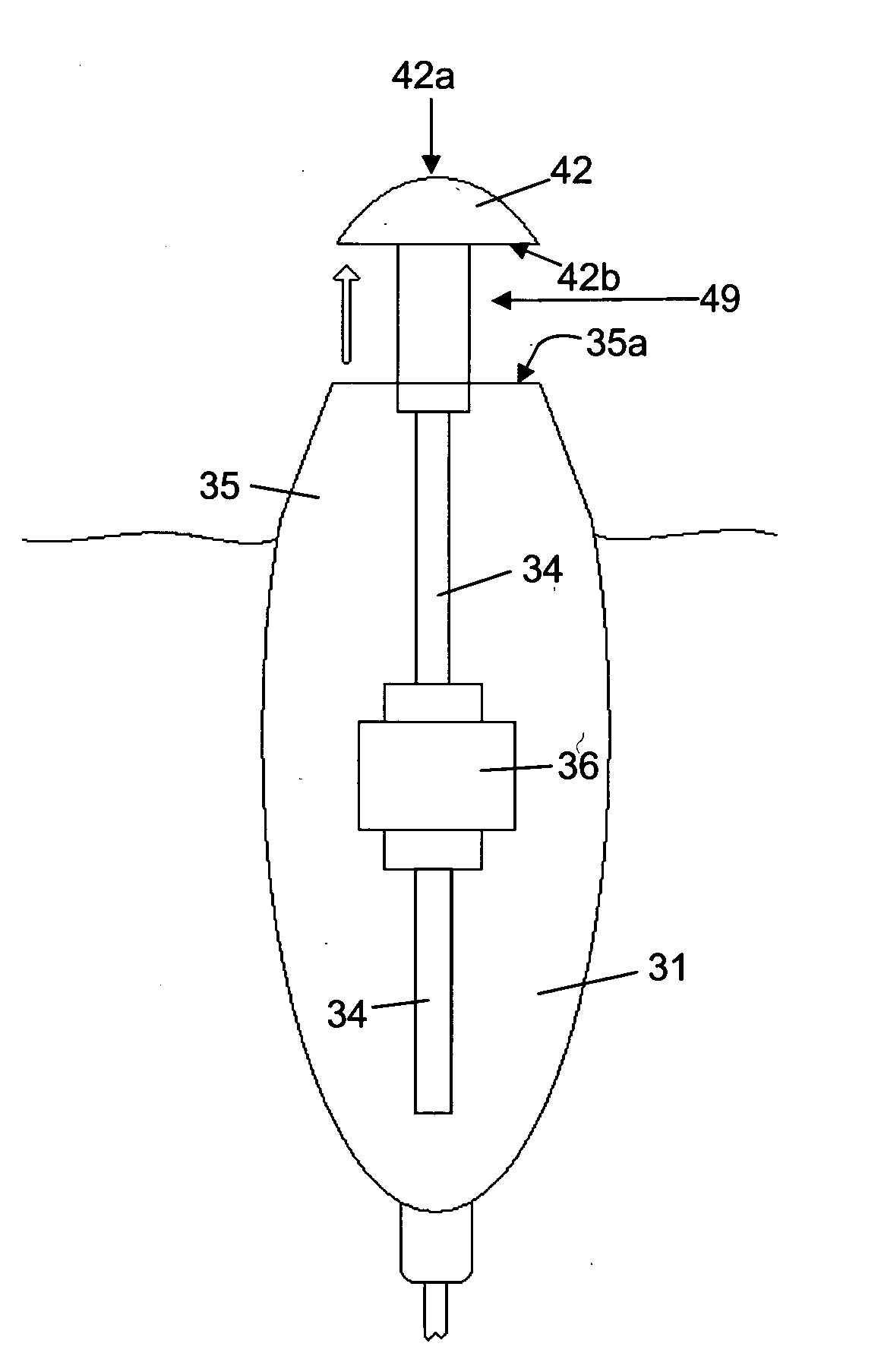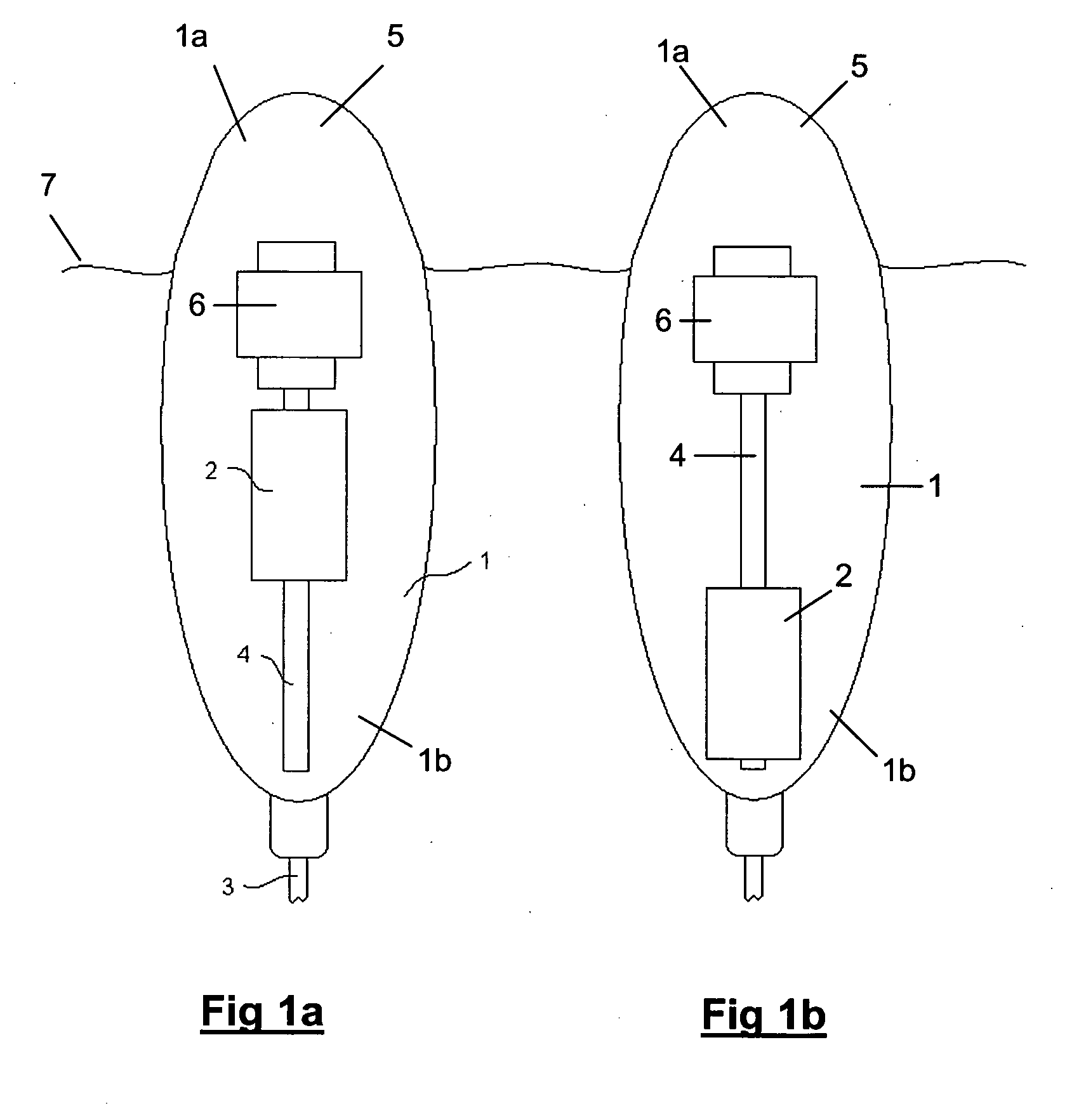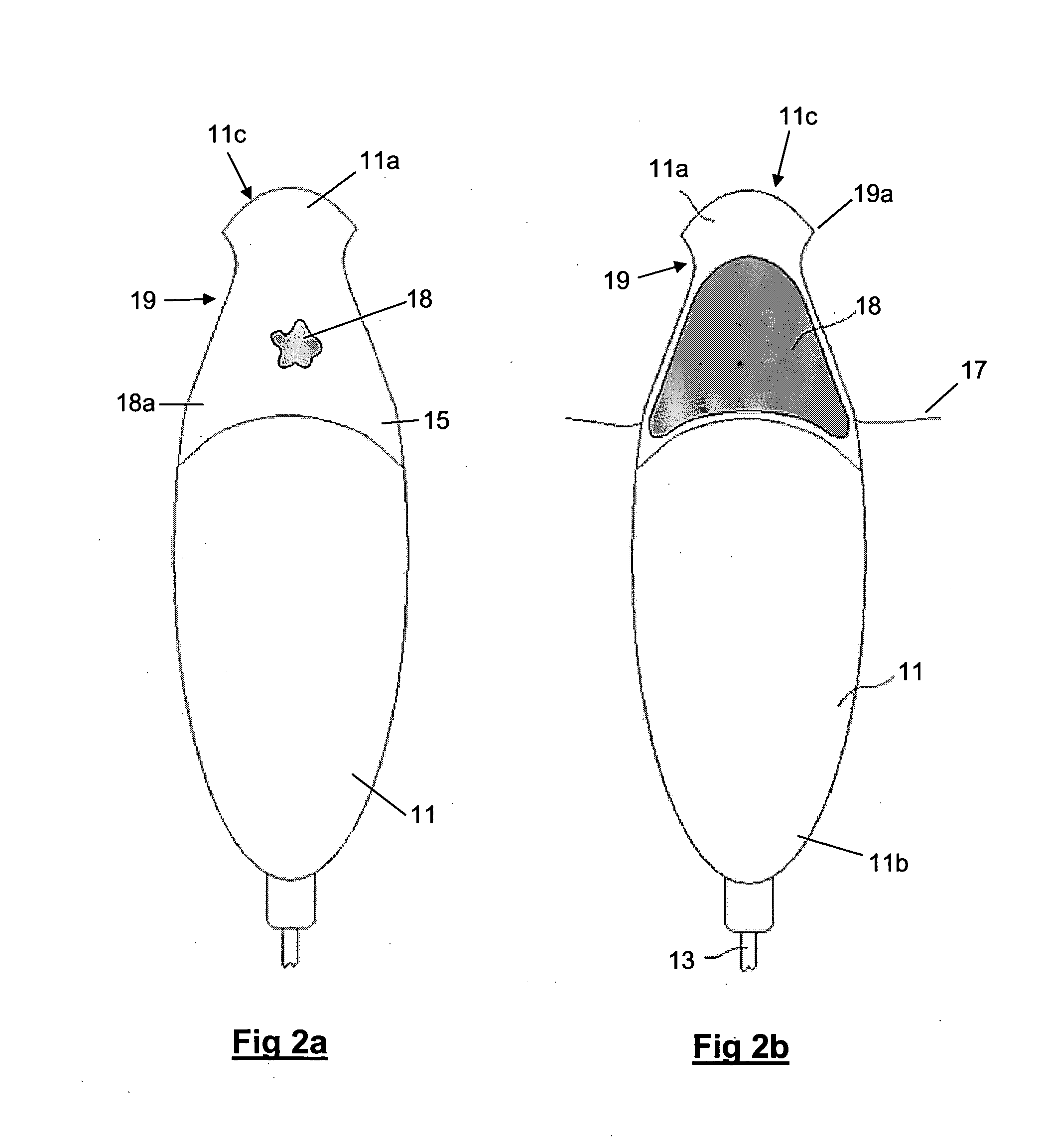Buoy
a buoy and buoy technology, applied in the field of buoys, can solve the problems of low data rate of buoys designed to operate directly below the surface, limited integration of submarine vessels into naval surface operations, and risk of submarine location detection, and achieve the effect of increasing the protection of electronic equipmen
- Summary
- Abstract
- Description
- Claims
- Application Information
AI Technical Summary
Benefits of technology
Problems solved by technology
Method used
Image
Examples
first embodiment
[0039]FIGS. 1a and 1b show as cross-sectional views a buoy 1 according to the present invention. The buoy 1 has a main body 5 which accommodates various components including communications equipment, batteries and the like. The buoy 1 is shown in FIGS. 1a and 1b in a floating position, such that the buoy is in a generally upright orientation with an upper end 1a containing an antenna (not shown) being supported about the water line 7. Inside the buoy 1 there is located a moveable mass 2 which is movable along a longitudinal screw 4 by means of a motor 6. The mass 2 comprises heavy payload components such as batteries and optical conversion equipment. The mass (dry weight) of the buoy 1 is about 24 Kg and the mass of the moveable mass 2 is about 8 Kg. In a modification of this embodiment, the mass of the buoy is 35 Kg, the moveable mass being about 12 Kg.
[0040]The mass 2 is moveable between (i) a first position (shown in FIG. 1b), in which the centre of mass of the buoy is off-set fr...
second embodiment
[0045]In a modification of the second embodiment, the movable mass is fixed and the motor is removed such that the centre of mass of the buoy may be changed only by means of allowing the bladder to expand and contract as previously described.
[0046]A further additional or alternative modification to the second embodiment would be to control actively the contraction and expansion of the bladder. For example, a heater could be provided to heat fluid within a reservoir which would expand to fill and expand the bladder as and when required. Pumps or the like could additionally, or alternatively, be used to inflate and / or deflate.
[0047]It will be appreciated, that the shape of the buoy 11 of the second embodiment including the waisted region 19 could by itself provide advantages over conventional shapes of communications buoys, irrespective of whether or not the moveable mass, expandable bladder or other ballasting systems are provided.
[0048]FIGS. 3a and 3b show in cross-section a buoy 31...
PUM
 Login to View More
Login to View More Abstract
Description
Claims
Application Information
 Login to View More
Login to View More - R&D
- Intellectual Property
- Life Sciences
- Materials
- Tech Scout
- Unparalleled Data Quality
- Higher Quality Content
- 60% Fewer Hallucinations
Browse by: Latest US Patents, China's latest patents, Technical Efficacy Thesaurus, Application Domain, Technology Topic, Popular Technical Reports.
© 2025 PatSnap. All rights reserved.Legal|Privacy policy|Modern Slavery Act Transparency Statement|Sitemap|About US| Contact US: help@patsnap.com



